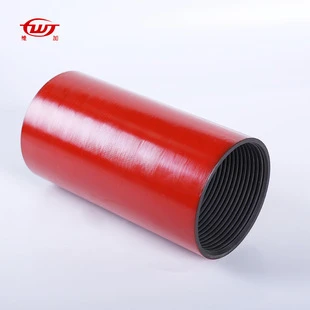tubing pup joint
Understanding Tubing Pup Joints in the Oil and Gas Industry
In the realm of oil and gas exploration and production, the terminology can often be complex, yet it is crucial for effective communication and safety. One such term that holds significant importance is the tubing pup joint. This article seeks to elucidate the concept of tubing pup joints, their purpose, and their relevance within the industry.
A tubing pup joint is a short segment of tubing that serves a specific purpose in the installation and maintenance of oil and gas wells. Essentially, it is a length of pipe that is shorter than conventional tubing sections, typically ranging from a few feet to several feet long. These joints are vital in the assembly of the tubing string, which is the vertical pipe that transports hydrocarbons from the reservoir to the surface. The tubing pup joint's primary purpose is to adjust the length of the tubing string, facilitating proper installation and ensuring optimal performance.
One of the most critical reasons for using tubing pup joints is to accommodate variations in well depths and conditions
. Drilling operations may not always proceed in a straight line, and variations in well design or unexpected geological formations can necessitate adjustments in the tubing length. Tubing pup joints provide the flexibility needed to make these adjustments without requiring the entire tubing string to be redesigned or refabricated.tubing pup joint

Furthermore, tubing pup joints play a crucial role in maintaining the integrity of oil and gas well operations. They are designed to withstand high pressures and corrosive environments commonly found in petroleum extraction. The construction of tubing pup joints typically involves robust materials such as carbon steel or alloy steel, ensuring durability and performance under demanding conditions. The joints are meticulously engineered to meet specific standards and specifications, enabling them to handle the stresses of downhole operations.
Installation and removal of tubing pup joints require specialized knowledge and equipment. When a tubing string is being assembled, the joints are threaded onto the existing sections of tubing, creating a continuous pathway for oil and gas to flow. In contrast, if modifications are needed—such as repairing a section of tubing or adjusting for pressure changes—these pup joints can be quickly disconnected and replaced, enhancing operational efficiency and reducing downtime.
In addition to their functional purposes, tubing pup joints must adhere to strict industry standards to ensure safety and effectiveness. The processes involved in their manufacturing and inspection are governed by established regulations, including those set forth by the American Petroleum Institute (API). This adherence to standards ensures that the joints can perform reliably under varying conditions, protecting both personnel and equipment.
In conclusion, tubing pup joints are integral components in the oil and gas industry, facilitating the assembly and maintenance of tubing strings while accommodating the unique challenges posed by well conditions. Their robust construction and multifaceted applications underscore their importance in achieving safe and efficient hydrocarbon extraction. As technology advances and exploration efforts continue to push the boundaries, the role of tubing pup joints will undoubtedly become even more critical in ensuring the successful operation of oil and gas wells. Understanding this essential component is key for professionals working within the field and for anyone interested in the complexities of energy production.
-
Unlock the Benefits of Pup Joints for Your OperationsNewsOct.31,2024
-
The Quality of Casing Couplings from ChinaNewsOct.31,2024
-
The Essential Role of Pup Joints in Drilling OperationsNewsOct.31,2024
-
The Benefits of Tubing Couplings for Your ProjectsNewsOct.31,2024
-
Enhance Your Drilling Operations with Tubing Pup JointsNewsOct.31,2024
-
Elevate Your Drilling Operations with Tubing CrossoversNewsOct.31,2024







